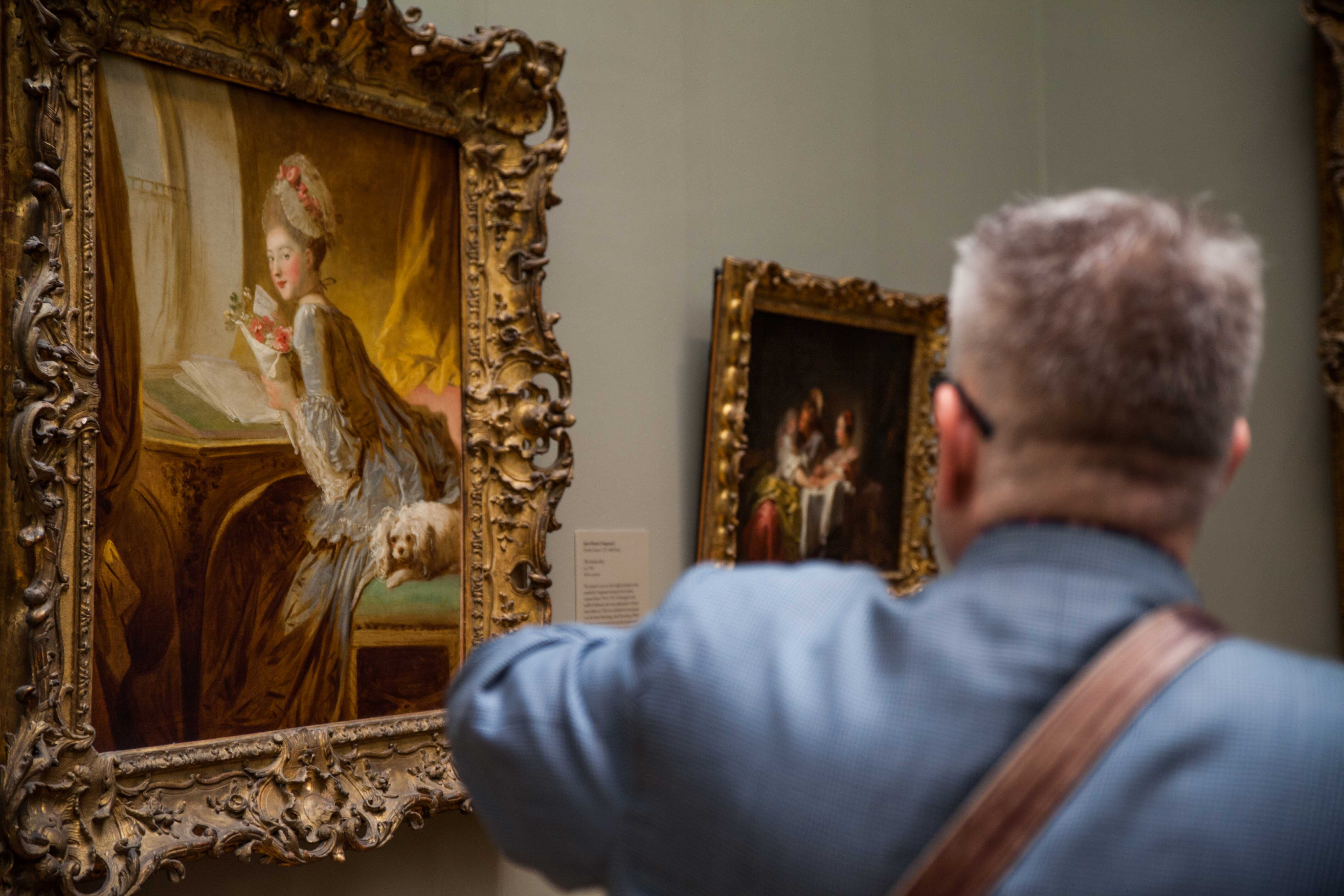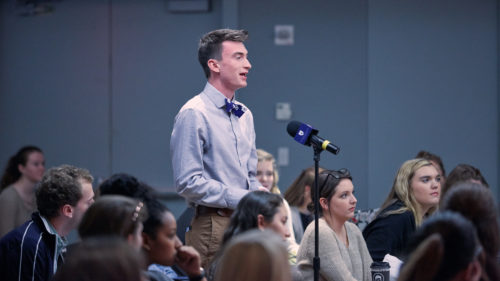How Not To Visit an Art Museum: A Conversation About the Met with Dan Siedell
Dan Siedell, author and art critic, serves as Presidential Scholar and Art Historian in Residence at The King’s College. Siedell offers some wise advice for people trying to get the most out of their Met visits.

New York City is famous for its museums—in many ways, it’s the cultural center of the world. The most famous of New York City’s many museums is probably the Metropolitan Museum of Art. Located on Manhattan’s Upper East Side, the Met is the biggest art gallery in the United States, and one of the biggest in the world. It’s no wonder that the museum is on every tourist’s must-see list.
Dan Siedell, author and art critic, serves as Presidential Scholar and Art Historian in Residence at The King’s College (where he recently taught a class on Modern Art entitled God in the Gallery, based on his book of the same name). Siedell offers some wise advice for people trying to get the most out of their Met visits.

You don’t have to see everything.
The most important thing about visiting an art collection like the one at the Met is to not feel the pressure to see everything. This is difficult for tourists, who may only get to visit the Met once in their lives, but art cannot be properly understood and appreciated when someone is jumping from one painting to the next, crossing them off a checklist of works to see before leaving New York.
Although there is tremendous pressure to rush through and visit a museum’s most famous paintings—who would visit the Museum of Modern Art without at least glancing at Van Gogh’s Starry Night?—Siedell thinks that viewers need to allow the work the time it needs. “It is important to keep yourself open to surprises,” says Siedell—“to be surprised by this painting or that sculpture that seems to jump out at you.”
Don’t miss out on the individual experience and personal impact.
Siedell also stresses the importance of an individual’s response to a work of art. When you are visiting the famous paintings merely because you think you ought to see them, you miss out on the experience of allowing a work to affect you in a genuine way (rather than because it is “supposed” to). This is the best way for an individual to interact with art, since it allows for the artist and the art itself to speak to the viewer in a way that a “10 Pieces of Art You Must See Before You Die” list would.
Individuals should interact with art as individuals, says Siedell: “I often remind my students that as they stand before a painting, to think about the pairs of eyes that have looked at that work of art over the years, decades, even centuries, the people who have stood in front of that work. And at that very moment as they stand before the painting, it is their eyes that have the privilege of looking at it.” You are not “the critics,” and so they cannot predict what work will speak to you.
This is another danger of visiting only a museum’s top attractions—you might miss out on the work that will prove to have the most impact on you, just because it did not have the same impact on a critic or the public in general.
Art collections like the Met aren’t mere repositories of pretty baubles to look at; instead, they are tremendous opportunities to be effected by art as individuals. The Met is much more than a tourist attraction—it’s a place where human expression can meet human reception. Those visiting museums need to keep this in mind and give the art the respect and opportunities that it needs in order to successfully fill out its purpose of interacting with the viewer.
Don’t miss the Abstract Expressionist paintings.
With all of that being said, however, there are still practical ways that one can “experience” the Met. Most tourists do only have a weekend, and perhaps can only take a few hours to stop by, and even people who live in NYC are generally too busy to visit the Met as often as this ideal kind of contemplative exploration requires. Siedell points people to an important, sometimes overlooked section of the museum that merits a visit or two (or twenty).
Siedell recommends visiting the Modern & Contemporary wing of the Met, where paintings by artists such as Franz Kline, Willem de Kooning, Jackson Pollock, and Mark Rothko are stored. These Abstract Expressionist paintings mark the first time that the United States took the lead in the culture, with New York starting to overtake Paris as the art capital of the world.
These works were all produced in the 1950s, which is an era most people see as an age of conformity and idealism; in reality, as Siedell explains, “It was a decade of tremendous experimentation in painting, sculpture, music, and dance.” Room 922 of the Met (where most of these Abstract Expressionist paintings are displayed) reveals this side of the 1950s, as well as marking a sharp turn in the nature of the art environment.
Siedell says this experimentation in art “came at a time of geo-political history in which personal freedom, the integrity of the individual, was under severe duress.” Abstract Expressionism allowed artists to express themselves in a unique way, and by expressing their individuality, they were able to counter this conformative view of the world. When people look at these paintings, they experience them as individuals as well, building a beautiful bridge between artist and viewer.
This wing of the Met also traces the growing relationship between the City and art (since the artists displayed all worked in NYC in the 1950s). Says Siedell,“To spend time in this gallery and to look at these strange paintings with smeared paint strokes expressing spontaneity and energy is to be reminded of the role that NYC and its energy played as a context and incubator for Abstract Expressionism, an art movement that changed everything for art and culture.”
Don’t forget to allow time to truly experience the Met.
When you visit the Met, make sure to carve out as much time as possible. It is no exaggeration to say that a person could spend months in the museum and still barely skim beneath the surface of all that it has to offer. If you’re only in town for the weekend, by all means, make the Met a part of your must-see list—but not just because you want to check it off that list. If you live in New York, then, certainly, visit the Museum often (as often as you can)—but not because you want to be cultured and impressive.
Visit the Met because you want to experience art and let it change you (rather than vice versa). If you have this attitude, it doesn’t matter how much time you spend in the Met—you know you’ll be getting the very most out of your time.




